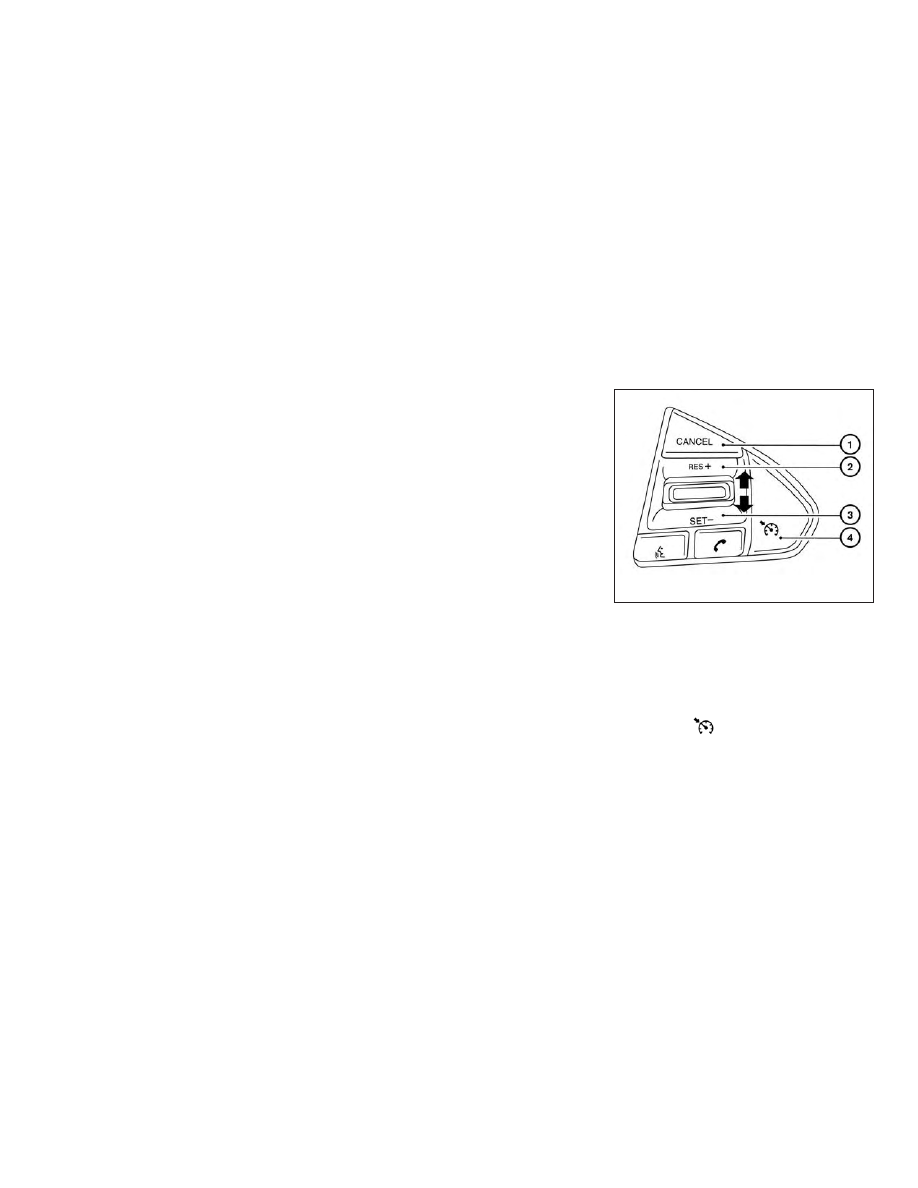Nissan Maxima (2018 year). Instruction - part 17

For Canada
Applicable law: Canada 310
This device complies with Industry Canada
licence-exempt RSS standard(s). Operation
is subject to the following two conditions:
1. This device may not cause interference,
and
2. This device must accept any interfer-
ence, including interference that may
cause undesired operation of the de-
vice.
Frequency bands: 24.05 – 24.25GHz
Output power: less than 20 milliwatts
Droit applicable: Canada 310
Le présent appareil est conforme aux CNR
d’Industrie Canada applicables aux appar-
eils radio exempts de licence. L’exploitation
est autorisée aux deux conditions suiv-
antes:
1. L’appareil ne doit pas produire de
brouillage, et
2. L’utilisateur de l’appareil doit accepter
tout brouillage radioélectrique subi,
même si le brouillage est susceptible
d’en compromettre le fonctionnement.
Bandes de fréquences: 24.05 - 24.25GHz
Puissance émise: Moins de 20 milliwatts
PRECAUTIONS ON CRUISE
CONTROL
1. CANCEL switch
2. RES+ switch
3. SET– switch
4. ON/OFF
cruise switch
∙ If the cruise control system malfunc-
tions, it cancels automatically.
LSD2414
CRUISE CONTROL (if so equipped)
Starting and driving
5-41